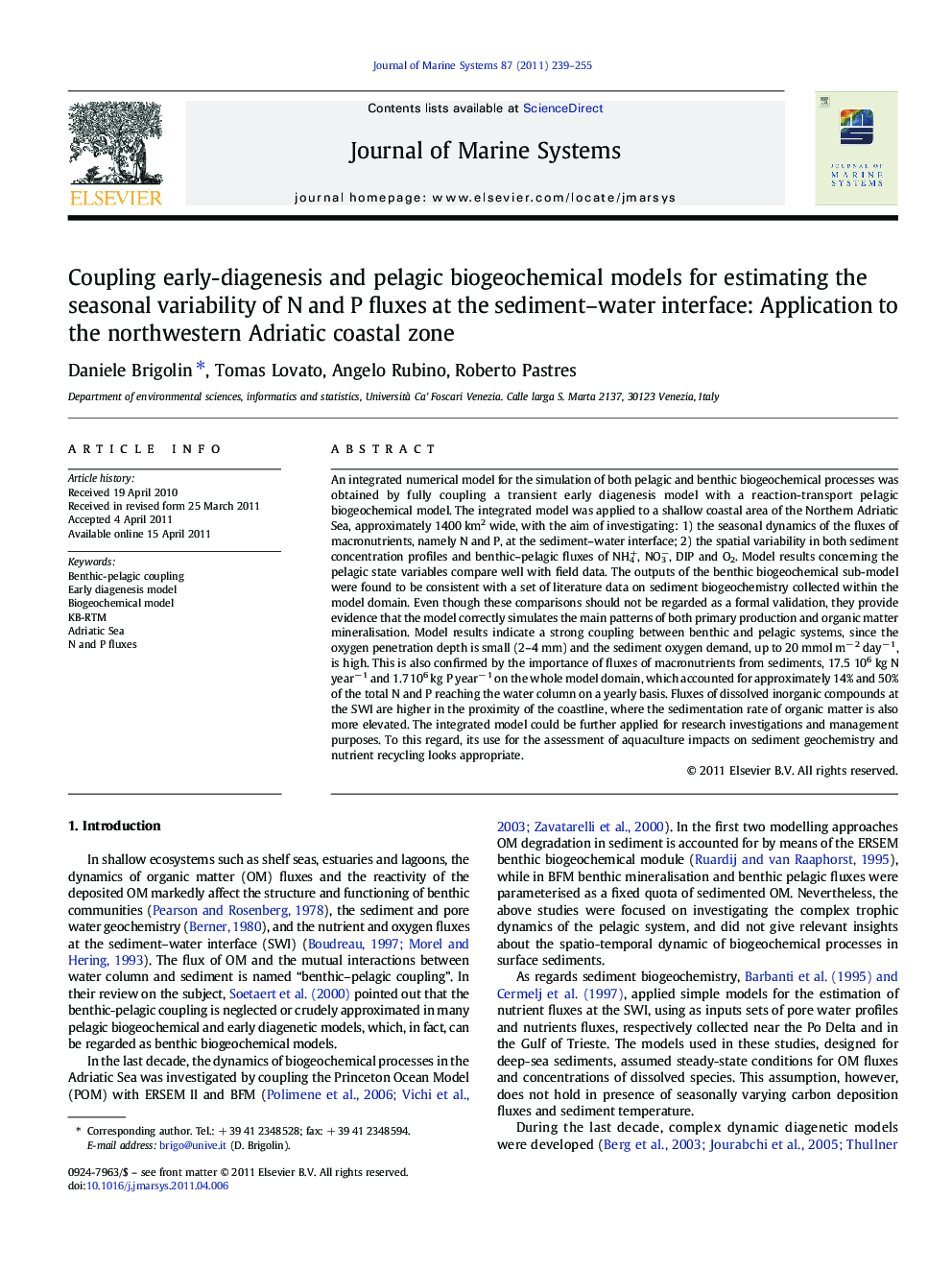| Article ID | Journal | Published Year | Pages | File Type |
|---|---|---|---|---|
| 4548456 | Journal of Marine Systems | 2011 | 17 Pages |
An integrated numerical model for the simulation of both pelagic and benthic biogeochemical processes was obtained by fully coupling a transient early diagenesis model with a reaction-transport pelagic biogeochemical model. The integrated model was applied to a shallow coastal area of the Northern Adriatic Sea, approximately 1400 km2 wide, with the aim of investigating: 1) the seasonal dynamics of the fluxes of macronutrients, namely N and P, at the sediment–water interface; 2) the spatial variability in both sediment concentration profiles and benthic–pelagic fluxes of NH4+, NO3−, DIP and O2. Model results concerning the pelagic state variables compare well with field data. The outputs of the benthic biogeochemical sub-model were found to be consistent with a set of literature data on sediment biogeochemistry collected within the model domain. Even though these comparisons should not be regarded as a formal validation, they provide evidence that the model correctly simulates the main patterns of both primary production and organic matter mineralisation. Model results indicate a strong coupling between benthic and pelagic systems, since the oxygen penetration depth is small (2–4 mm) and the sediment oxygen demand, up to 20 mmol m− 2 day− 1, is high. This is also confirmed by the importance of fluxes of macronutrients from sediments, 17.5 106 kg N year− 1 and 1.7 106 kg P year− 1 on the whole model domain, which accounted for approximately 14% and 50% of the total N and P reaching the water column on a yearly basis. Fluxes of dissolved inorganic compounds at the SWI are higher in the proximity of the coastline, where the sedimentation rate of organic matter is also more elevated. The integrated model could be further applied for research investigations and management purposes. To this regard, its use for the assessment of aquaculture impacts on sediment geochemistry and nutrient recycling looks appropriate.
► A coupled benthic-pelagic biogeochemical model was applied in the Adriatic coast. ► We studied concentrations and benthic-pelagic fluxes of NH4+, NO3−, DIP and O2. ► Bottom fluxes represent an important source of macronutrients for the pelagic system. ► Corroboration on existing data allowed to better focus on present model limitations.
